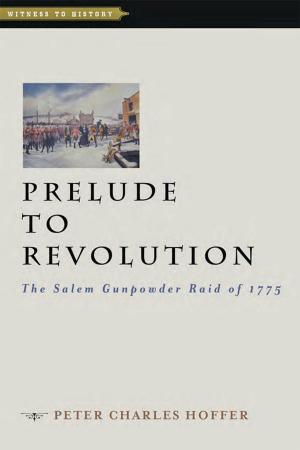A History of the City of Brooklyn and Kings County (Volume II)
Nonfiction, History, Modern, 18th Century, Americas, United States, State & Local, Revolutionary| Author: | Stephen M. Ostrander | ISBN: | 1230000219053 |
| Publisher: | ANNIE A. OSTRANDER | Publication: | February 16, 2014 |
| Imprint: | Language: | English |
| Author: | Stephen M. Ostrander |
| ISBN: | 1230000219053 |
| Publisher: | ANNIE A. OSTRANDER |
| Publication: | February 16, 2014 |
| Imprint: | |
| Language: | English |
A History of the City of Brooklyn and Kings County (Volume II)
During the whole period of the Revolution Brooklyn had been peculiarly disturbed. More than any other of the county towns, it had been distracted and prostrated. Farms had been pillaged and the property of exiled Whigs given over to Tory friends of the Governor. Military occupation naturally resulted in great damage to property. "Farmers were despoiled of their cattle, horses, swine, poultry, vegetables, and of almost every necessary article of subsistence, except their grain, which fortunately had been housed before the invasion. Their houses were also plundered of every article which the cupidity of a lawless soldiery deemed worthy of possession, and much furniture was wantonly destroyed. At the close of this year's campaign, De Heister, the Hessian general, returned to Europe with a shipload of plundered property." While the other towns were receiving pay for the board of prisoners, and thus being justified in maintaining their crops, Brooklyn remained a garrison town until the end.
After the evacuation, Brooklyn's farmers and tradesmen at once turned their attention to the restoration of the orderly conditions existing before the war. It also became necessary to reorganize the local government. In April, 1784, was held the first town meeting since April, 1776. Jacob Sharpe was chosen town clerk, and Leffert Lefferts, the previous clerk, was called upon to produce the town records. The result of this demand has already been described in the reference to the missing records.
Before proceeding further with the narrative of Brooklyn's growth after the Revolution, it will be necessary to return for a moment to certain sad circumstances that followed the battle of Brooklyn and other successes of the British. The battle of Long Island was fought August 27, 1776, and Fort Washington was captured in November. These victories gave the British between 4000 and 5000 prisoners. At that time there were only two small jails in New York city. One was called the Bridewell, and was situated in Broadway near Chambers Street, and the other was known as the New Jail. These prisons could not accommodate the daily increasing number of prisoners. It was a dark hour in American history; success seemed to perch upon the banners of the enemy. Large accessions of prisoners were made, and quarters had to be provided for them. The churches were taken without ceremony and converted into receptacles for the captives. The sugar-houses were used for the same purpose. One of these was situated in Liberty Street, adjoining the old Middle Dutch Church. That church was also used. Within its walls thousands of prisoners were placed, regardless of comfort or sanitary rules. If its walls could speak they would tell a tale which would make a sad record.
A History of the City of Brooklyn and Kings County (Volume II)
During the whole period of the Revolution Brooklyn had been peculiarly disturbed. More than any other of the county towns, it had been distracted and prostrated. Farms had been pillaged and the property of exiled Whigs given over to Tory friends of the Governor. Military occupation naturally resulted in great damage to property. "Farmers were despoiled of their cattle, horses, swine, poultry, vegetables, and of almost every necessary article of subsistence, except their grain, which fortunately had been housed before the invasion. Their houses were also plundered of every article which the cupidity of a lawless soldiery deemed worthy of possession, and much furniture was wantonly destroyed. At the close of this year's campaign, De Heister, the Hessian general, returned to Europe with a shipload of plundered property." While the other towns were receiving pay for the board of prisoners, and thus being justified in maintaining their crops, Brooklyn remained a garrison town until the end.
After the evacuation, Brooklyn's farmers and tradesmen at once turned their attention to the restoration of the orderly conditions existing before the war. It also became necessary to reorganize the local government. In April, 1784, was held the first town meeting since April, 1776. Jacob Sharpe was chosen town clerk, and Leffert Lefferts, the previous clerk, was called upon to produce the town records. The result of this demand has already been described in the reference to the missing records.
Before proceeding further with the narrative of Brooklyn's growth after the Revolution, it will be necessary to return for a moment to certain sad circumstances that followed the battle of Brooklyn and other successes of the British. The battle of Long Island was fought August 27, 1776, and Fort Washington was captured in November. These victories gave the British between 4000 and 5000 prisoners. At that time there were only two small jails in New York city. One was called the Bridewell, and was situated in Broadway near Chambers Street, and the other was known as the New Jail. These prisons could not accommodate the daily increasing number of prisoners. It was a dark hour in American history; success seemed to perch upon the banners of the enemy. Large accessions of prisoners were made, and quarters had to be provided for them. The churches were taken without ceremony and converted into receptacles for the captives. The sugar-houses were used for the same purpose. One of these was situated in Liberty Street, adjoining the old Middle Dutch Church. That church was also used. Within its walls thousands of prisoners were placed, regardless of comfort or sanitary rules. If its walls could speak they would tell a tale which would make a sad record.















